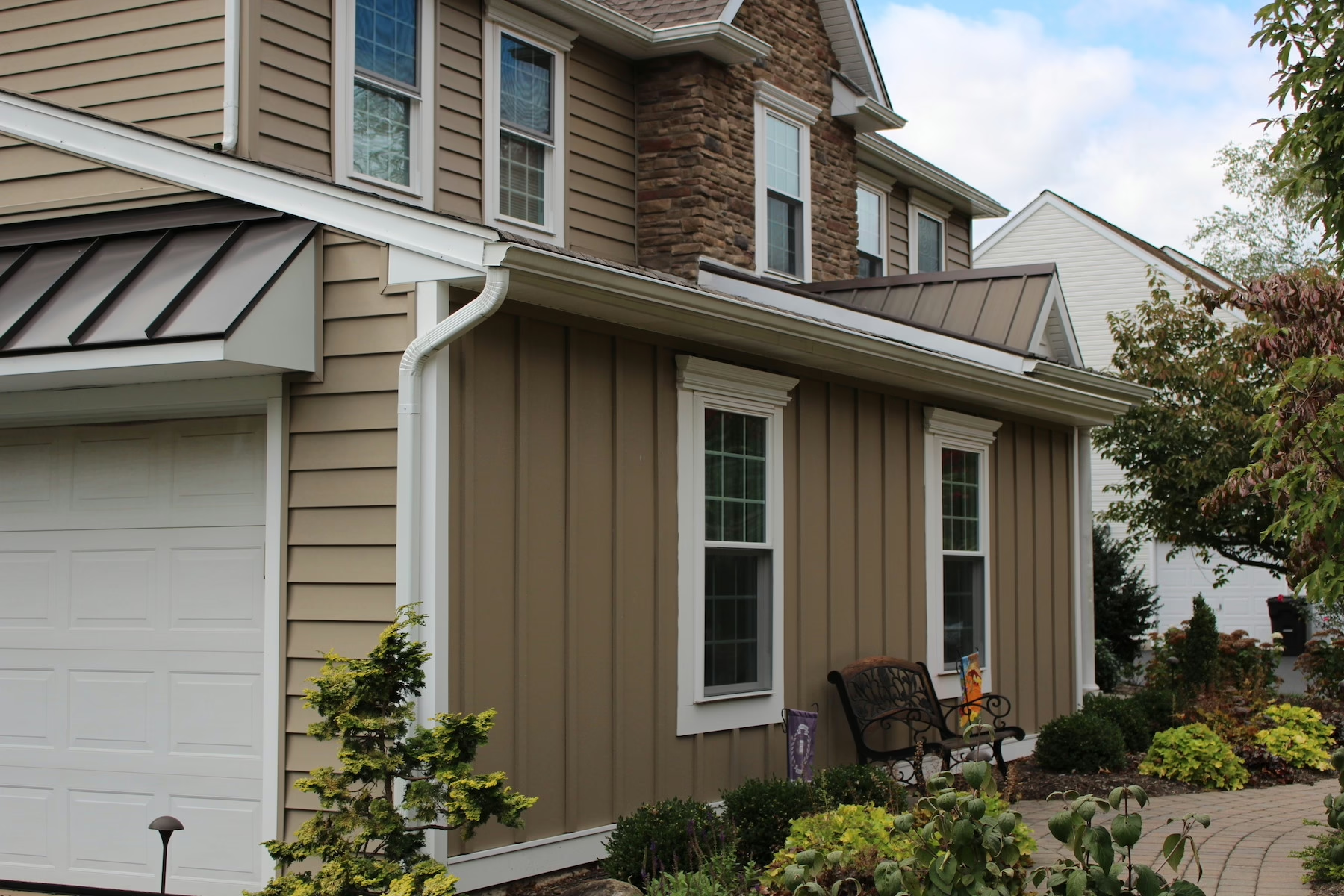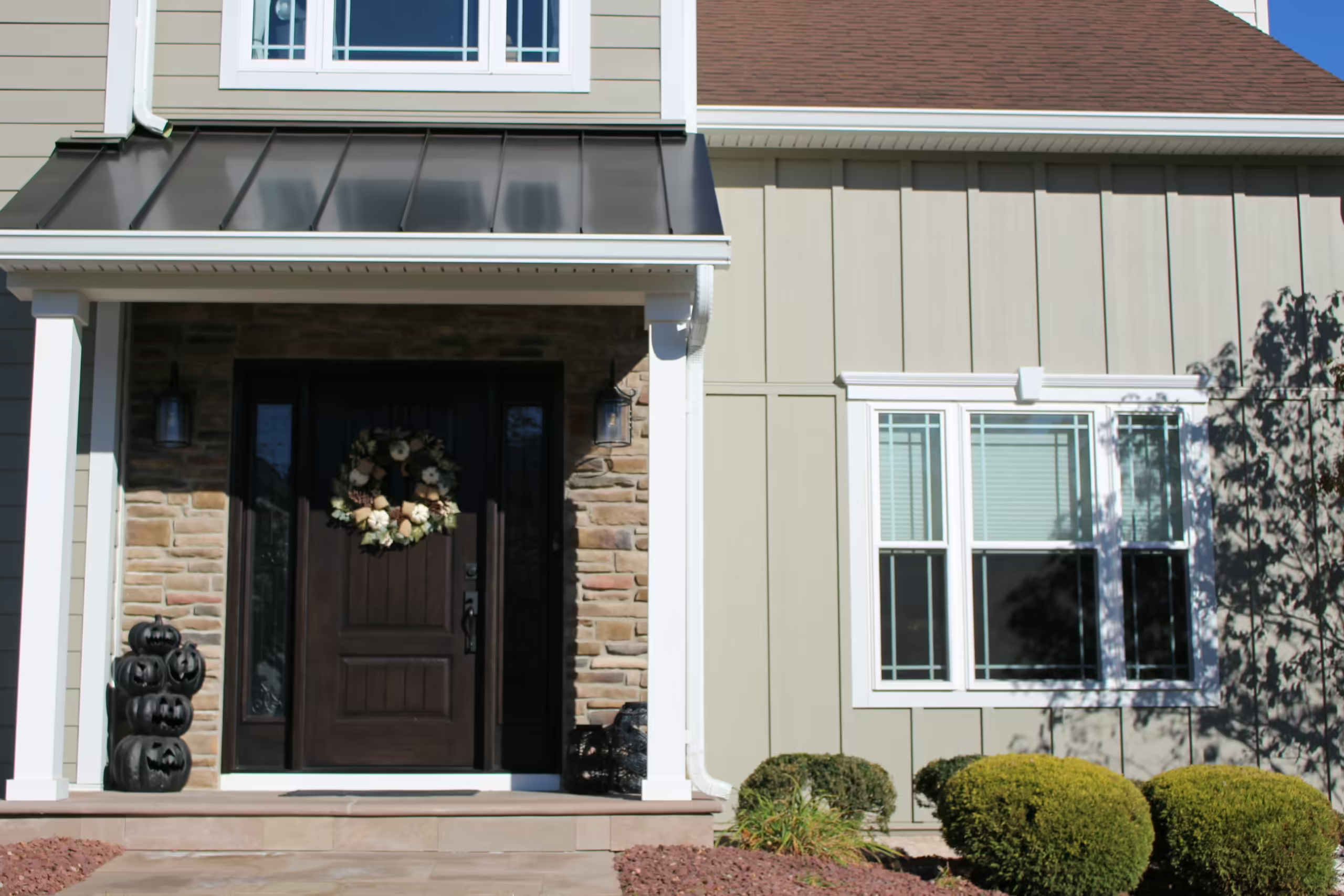Siding protects and beautifies your home, enhancing curb appeal and property value. But when siding becomes damaged by moisture, a host of costly problems can follow if the issue is ignored.
Arm yourself with knowledge about how to spot water infiltration, and you’ll save time and money as a result. Let’s dive into the facts about identifying water damaged siding so you can initiate a quick, smart solution.
Classic Causes of Water Damaged Siding
1. Compromised siding due to severe weather
When harsh weather moves through the area, your siding may become chipped, dented, cracked, or torn off. The result? Moisture invades due to the vulnerability in your siding created by a storm.
2. Pesky critters
Termites, carpenter ants, and even woodpeckers can create holes in your siding, opening the door to unwanted moisture penetration. These pesky critters are usually looking for food, or for a place to nest, and when they try to make your home into theirs, their damage means water infiltration is usually just ahead.
3. Precipitation
Rain, snow, and ice can create water damage once your home siding no longer maintains a seal you can rely on. When water invades your siding, rot, mold, and more trouble are in its future unless you respond quickly and repair or replace the affected boards.
What Water Damaged Siding Looks Like and How to Fix It
How to Spot Water Damaged Siding
Walk around your house after major storms, and twice a year to inspect your siding. If you see any of the following signs, contact a reputable siding contractor quickly to stop damage in its tracks. The sooner you address the problem, the smaller it will be.
Rot
To identify rot, look for dark orange or rusty colored spots on your home siding. Dry rot that is not addressed in a timely fashion can make its way to your structural foundation and wreak havoc. Rot is a serious issue that needs prompt action to prevent further problems.
Cracked siding boards
If your siding planks are cracked, loose, or missing after a severe storm, your home is vulnerable to damaging water infiltration. Contact an experienced contractor to have the situation evaluated and remedied.
Warped siding
When water seeps into your siding, it causes noticeable warping. And the more warped siding planks become, the more they invite water to infiltrate them, compounding the overall problem.
Spongy window trim
If the trim that borders your windows looks soft, press on it. If it isn’t solid, water has permeated your trim and your home is at risk of more water damage. The nasty thing about water damage is that it breeds more of the same when you don’t deal with it. The marred siding or trim brings more water into your exterior, making way for greater problems.
Sunken or protruding nails
If the position of your home siding’s nails has changed, you may have a water infiltration issue. Nails may appear sunken (due to siding swelling and warping) or protruding—because water has made its way into your siding and caused studs to swell and push nails out.
Cracked windowsills
If your windowsills have cracked, water now has an open passage into your home. Mold and rot may follow, and electrical emergencies may occur if your infiltrated windowsills are near electrical outlets. Avoid costly problems by having your home siding and windowsills inspected promptly by a reputable contractor.
Mold
Take a look at any areas of your siding that are in the shade most of the day, and if you spot mold or mildew on them, it’s a clear sign you’re dealing with moisture infiltration.
Damaged caulking
Caulking keeps the joints that surround your windows and the joints between siding panels sealed to keep moisture out of your house. But if your caulking becomes damaged or worn out, then your home siding can be penetrated by water. Avoid this problem by inspecting your caulking at least twice a year. Replace it when necessary to keep water out of your siding.
Increased utility bills
When energy bills spike upward, it’s important to find out why and remedy the problem. If your home’s protective layer is compromised, opening the door to moisture infiltration, it could allow outdoor air to infiltrate and utilities to skyrocket.
Extreme fading
If your once vibrant siding is dull and faded, it may be at the end of its expected life. While it may not be saturated with moisture infiltration, it could be soon. Stay ahead of problems by contacting a reputable siding contractor to get a free estimate for new siding. Keep “moisture resistance” at the forefront of what you look for in your new siding material so you can bypass trouble in the future and enjoy a well-protected home.
What Water Damaged Siding Looks Like and How to Fix It
What to Do about Water Damaged Siding
Water damage becomes costly if you ignore it. Avoid structural damage and unhealthy mold growth in your home by contacting a trustworthy siding contractor to repair or replace your moisture damaged siding. You may be an adventurous DIYer who loves to tackle tough projects, and that’s great. But siding installation requires specialized tools, and an experienced, highly trained installation team can ensure your siding is fitted properly and will go the distance. Hiring a contractor with a track record of success who has been in your community for years and will be there when you need them is a great solution to the siding dilemma.
Siding Installation that Yields Long-Lasting High Performance
Water resistant James Hardie siding is the perfect solution to avoid moisture infiltration. At Preferred Home Improvement, we are a James Hardie Elite Preferred installer, so you can have peace of mind that your siding is installed according to the Hardie company’s high standards. You deserve the long-term high performance Hardie siding delivers.
Learn how our James Hardie siding services can safeguard your home from costly moisture infiltration and elevate your curb appeal and home value.



